16 Types of Holly Shrubs, Bushes, & Trees for Your Yard
Author: Jen Worst | Editor: Omar Alonso
Review & Research: Jen Worst & Chris Miller

Have you ever looked at Christmas decorations and wondered what the ornamental green leaves with red berries on them are? Well, those are types of holly bushes, or at least one type of it.
Holly plants are found all over the world and have around 480 species of shrubs and trees. All holly plants feature glossy green leaves and bear berries that range from white, pink, red to dark blue and even black.
These plants are a great addition to any home or garden. To know more about the best holly varieties, keep reading this article.
16 Types of Holly
When we talk about hollies, we most commonly refer to the American Holly or the English Holly. But in reality, there are so many other hollies that can add some vibrant colors to your home. Holly throughout history includes ancient use by Romans during their festivals, Druids during holidays, Native Americans for decorations and trade, and much more.
To help you pick out those, we have listed the best types of holly plants that you should definitely check out.
Carolina Holly (Ilex ambigua)
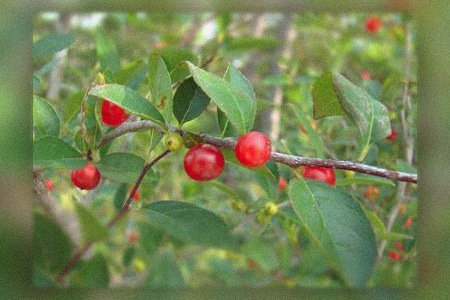
Carolina holly is also popularly known as sand holly – because it grows well in sandy soils. This is a deciduous species that grows mainly in the south-central and the southeastern United States.
The plant produces bright red berries in the fall, which eventually fall off in winter. These trees can grow up to 20 feet or stay at a small height for their whole life.
Its branches are either shiny brown or black, and it has unique purple twigs. Other names for this species are "ambiguous winterberry" and "possum holly."
English Holly (Ilex aquifolium)
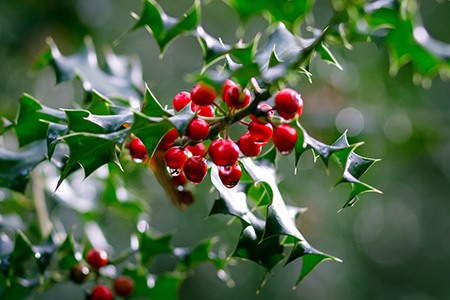
We have all seen homes decorated with holly leaves during Christmas. News flash – the holly used for those decorations is none other than English holly. It is also known as common holly, Christmas holly, European holly, and Oregon holly.
The leaves look beautifully glossy and are of a dark green color. Some varieties, such as "Argentea," have yellow edges to them. The berries are mostly red but can also be yellow or orange even.
English holly bush types do not respond well to heat. Hence, they are best grown in the cold (but not windy) or shady climates. Again, wet soil is not good for their growth, so make sure to plant them using soil that can drain water easily.
Dahoon Holly (Ilex cassine)
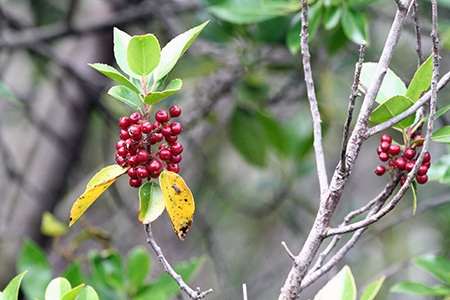
Most hollies grow well in sunny areas or well-drained soils. However, an exception is this Dahoon holly. It grew wonderfully in swampy areas and was found originally in the Caribbean, Mexico, and the eastern United States.
These plants are typically small in size and work well as decorations. They have glossy green leaves with spines at their edge. The red berries create an amazing contrast against the dark green and give a Christmas style feeling. Add to the red by growing various types of poppies with these and you'll have a beautiful scene.
Lusterleaf Holly (Ilex latifolia)
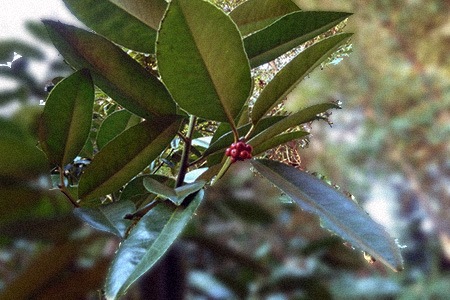
Lusterleaf holly indeed adds some 'luster' to your gardens, thanks to their shiny green leaves. They also produce beautiful berries, but they are not as bright as the ones in other hollies.
This plant is also known as "Rajo Holly" or "Tarja" in some areas. Native to China and Japan, these plants can grow up to 60 feet if well cared for.
These types of holly trees thrive well in areas that have full sun, or at least partial shade. For it to bear fruit, it needs the help of both male and female plants.
Blue Holly (Ilex meserveae)
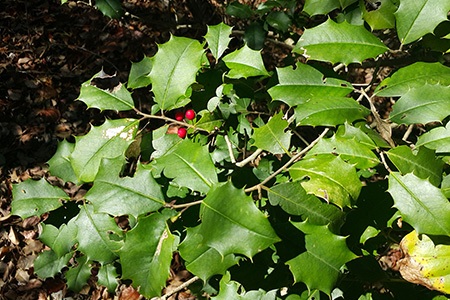
The blue Holly is a crossbreed between the famous English holly and Tsuru holly. It survives best in areas with acidic soil that is well-drained.
It derives its name from the dark blue-green colored leaves on it. The berries are quite large and red in color.
Common Winterberry (Ilex verticillata)
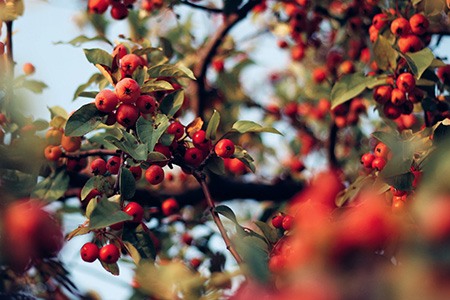
The common winterberry is also known as Michigan holly, Canada holly, Virginian winterberry, swamp holly, coralberry, and black alder. The most astounding feature of this tree is its berries.
The berries grow in such abundance that they cover the whole branch and don't leave any space for leaves. The plant has many cultivars, each with a different color of fruit.
The "Red Sprite" cultivar is characterized by scarlet red berries. "Berry Heavy Gold" features beautiful golden yellow berries, while "Winter Gold" has berries that are orange in color.
These holly tree types originally grew in the eastern United States. Its beautiful colored fruits make it a great addition to any garden and also help to attract birds.
It turns into an impressive dark maroon color as it ages, so it never really loses its importance. Make sure to add this to your garden if you are looking for an effortlessly attractive species.
American Holly (Ilex opaca)
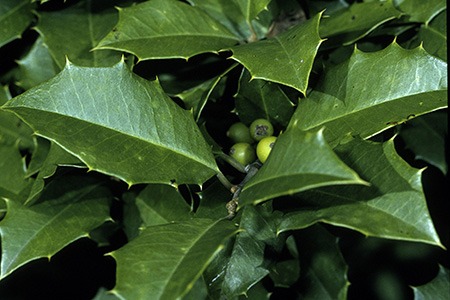
American holly is characterized by glossy green leaves and clusters of red berries. American holly is also commonly known as scrub holly, hummock holly, or dune holly.
These holly bush types are most commonly used for Christmas decorations if you do not have English holly plants nearby as both the plants look the same.
This tree is quite popular in large parks because of how tall and beautiful it looks. American hollies can grow up to 60 feet tall and reach a width of 20 feet sometimes. They thrive well in fully sunny areas but can grow in partial shade as well.
The "Croonenberg" variety among American holly can pollinate itself since it has both male and female flowers on the same tree. Another variety - "Canary" sports striking yellow flowers that add joy and merriment to any garden.
My mom grew these types of holly bushes along with blueberries in a flower bed off the side of the house when I was growing up, and around the bases she would plant various types of camellias to pop in some extra colors. It was a sight to behold.
Finetooth Holly (Ilex serrata)
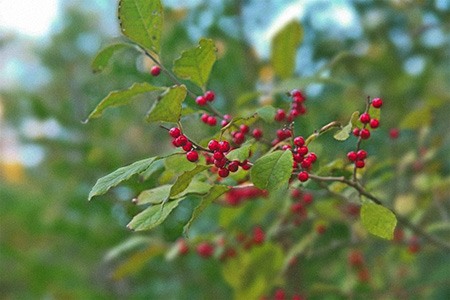
Finetooth Holly is also commonly known as Japanese winterberry or deciduous holly. This plant is well known to thrive well in cold climates, more than any other holly plant even. It is native to China and Japan and can grow from 6 feet to 15 feet tall.
Many people get confused between this plant and the common winterberry holly varieties. The main difference between these two is that finetooth has smaller fruits and is semi-evergreen.
Chinese Holly (Ilex cornuta)
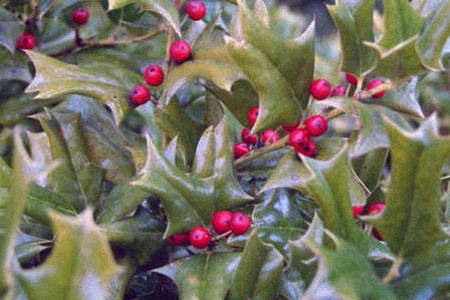
The most beautiful feature of a Chinese holly is its leaves. The leaves are of beautiful, rich emerald color. The texture is also different from other plants and gives a slightly leathery feel.
The plant bears white-colored fragrant flowers that later turn into red berries. You can grow Chinese hollies in any garden, as they can be kept either as a bush or a large tree.
If allowed to grow, the tree will reach 20 feet in height. Another thing to note is, this tree can adapt to coastal gardens.
Inkberry (Ilex glabra)
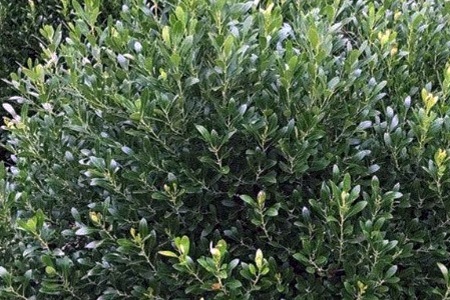
This plant derives its name from the ink blackberries they produce, although some variants such as "Ivoryqueen" and "Leucocarpa" bear red and white berries.
Inkberry types of holly mainly grows in swamps and coastal areas, but they tolerate sandy lands as well. They are one of the most adaptable hollies you can get for your garden.
The plant grows into a compact bush with glossy oval leaves that have no teeth or spikes. They produce white, greenish flowers in the summer. Many people know this plant as "Bitter Gallberry," "Gallberry," and "Evergreen Winterberry" as well.
Longstalked Holly (Ilex pedunculosa)
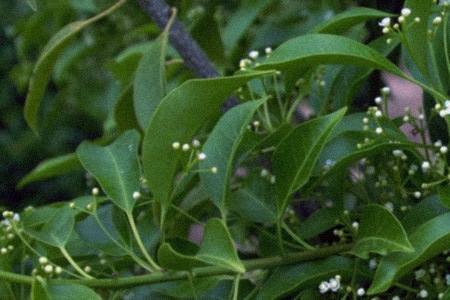
If you live in an urban area, then you probably are not new to the concept of shrubs dying due to pollution. Fortunately, with this longstalked holly, you will not have to face any such problem, as this plant tolerates pollution well.
The name of this plant is due to the fact that it grows fruits at the end of a long stalk, otherwise known as a peduncle.
This variety is great to add some life and color to any garden, as its leaves are shimmery green in color and makes any garden look much more vibrant. The scarlet red berries also add to this beauty.
Catberry Holly (Ilex mucronata)
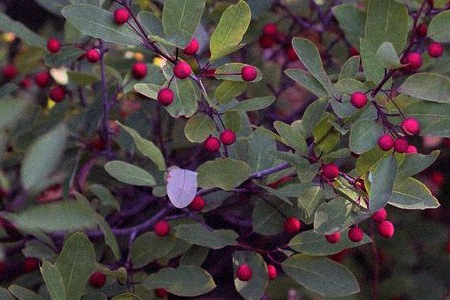
Sometimes called Mountain holly, due to being found naturally in higher altitudes, the catberry holly is plentiful with its fruits and is known for keeping birds well-fed during their migration periods.
Before being classified in the Ilex genus, catberry holly was considered a part of the Nemopanthus genus. It features lengthy stalks on it called peduncles that grow the iconic red fruits where they terminate.
These types of holly bushes grow tall, between 5 and 10 feet in height throughout the eastern regions of North America. They desire moist soils, especially in zone 4 of the USDA Zones, where they are most hardy.
Yaupon Holly (Ilex vomitoria)
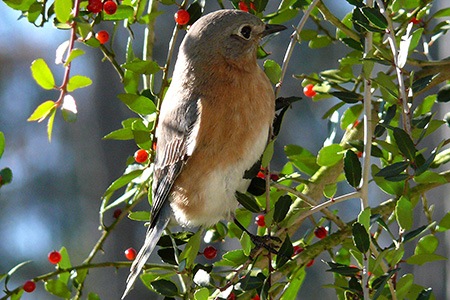
The yaupon holly has one of the most interesting histories behind its name. Native Americans used to brew the leaves of this plant to make a drink.
It is reported that this drink made people vomit, hence the last name – vomitoria. However, the plant itself does not cause any stomach troubles.
If you live at the seaside, this plant is a great choice as it can grow well in salty areas. It is also drought and disease resistant, hence a favorite of many when it comes to hollies.
The leaves are oval and glossy and have toothed margins. You can train the tree into small vase-shaped plants or use them as a screening hedge even. Planting these in front of a row of whatever types of arborvitae looks pretty great to bring in some color down low.
Yaupon hollies bear small white flowers in spring, which turn to red or yellowish berries later. It is a deciduous plant, so if you want it to bear fruit, you also need to plant a male pollinator. You might also know this plant by the name "Indian Black Drink," "Christmas Berry," and "Cassina."
Yerba Mate (Ilex paraguariensis)
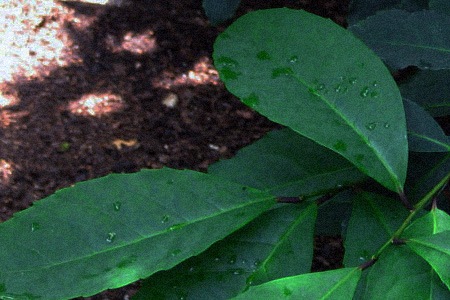
An increasingly popular tea drink is made from the Yerba Mate holly bush types. That's because the leaves contain theobromine and caffeine, similarly to the cacao bean.
Once you purchase or grow a Yerba Mate successfully you can grow more through planting the seeds or germinating indoors and transplanting them. But be patient and expect not to have a fully mature plant for several years. That's for making tea, anyways.
Japanese Holly (Ilex crenata)
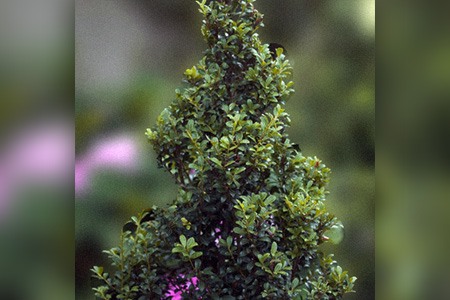
Japanese Holly is a popular choice for many gardeners because they can be trained to grow as either shrubs or trees. You can keep it as small as 2 feet or let it grow into a 10 feet tall tree.
This is an evergreen plant. Its leaves have a different rounded shape with wavy edges and are small in size. Also, it sports berries that are either black or dark blue in color. This one is tolerant of almost all weather and soil conditions.
Hawaiian Holly (Ilex anomala)
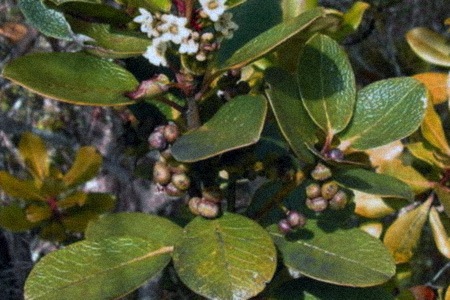
Hawaiian hollies are one of the prettiest plants you can keep in your garden. They bear fruits that are a dark purple in color and look very pretty against glossy dark green leaves.
They also produce bunches of small white flowers that have light green centers. These plants are the only hollies that are native to the Hawaiian Islands. Grow them alongside various types of hibiscus to get awesome color combinations.
They can be grown in pots as small shrubs or let free to grow up to 40 feet in height. Their usual lifespan is about 5 years.
Other Types of Holly
Mentioning every single one of the holly shrub types would be silly when most of us can't grow them anyways. Many only thrive or are hardy in specific regions. Others aren't visually attractive enough to warrant growing in your garden or lawn.
Here are some other types you can investigate though, if you wish:
- Round Leaf Holly (Ilex rotunda)
- Golden King Holly (Ilex x altaclerensis)
- Myrtle-Leaved Holly (Ilex myrtifolia)
- Hedgehog Holly (Ilex aquifolium)
- Small-Leaved Holly (Ilex canariensis)
- Possumhaw Holly (Ilex decidua)
The main thing to narrow your search and focus is to stick with those that thrive well in your USDA Hardiness Zone.
Types of Holly for Lawn & Garden
Besides being linked with Christmas decorations, holly plants can definitely add some life and beauty to your garden. They make winter gardens look exotic and create beautiful foundations and screens in summer gardens.
Now that you have read about the most common types of holly, you will be able to choose for yourself which plant would suit your garden the best.



